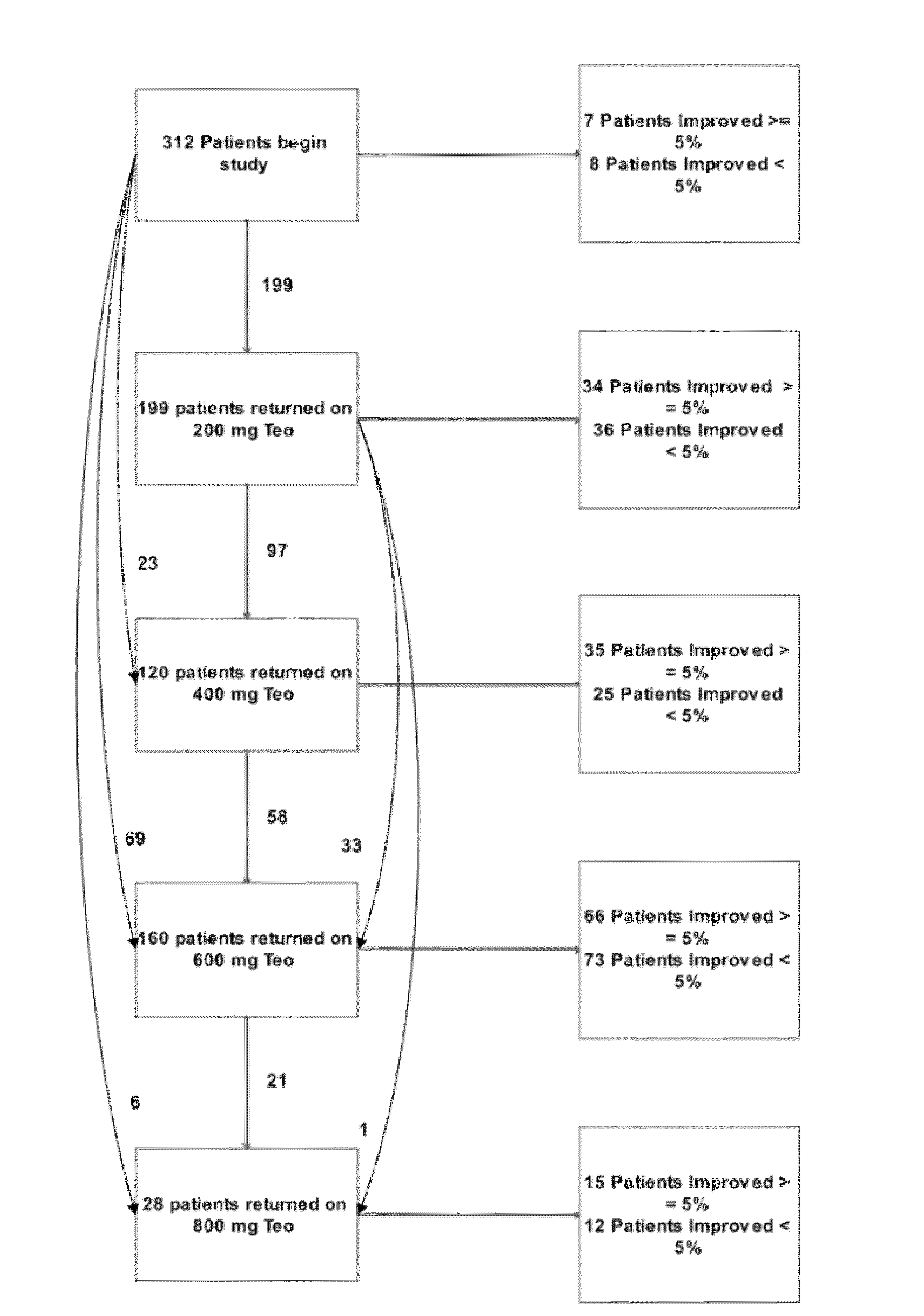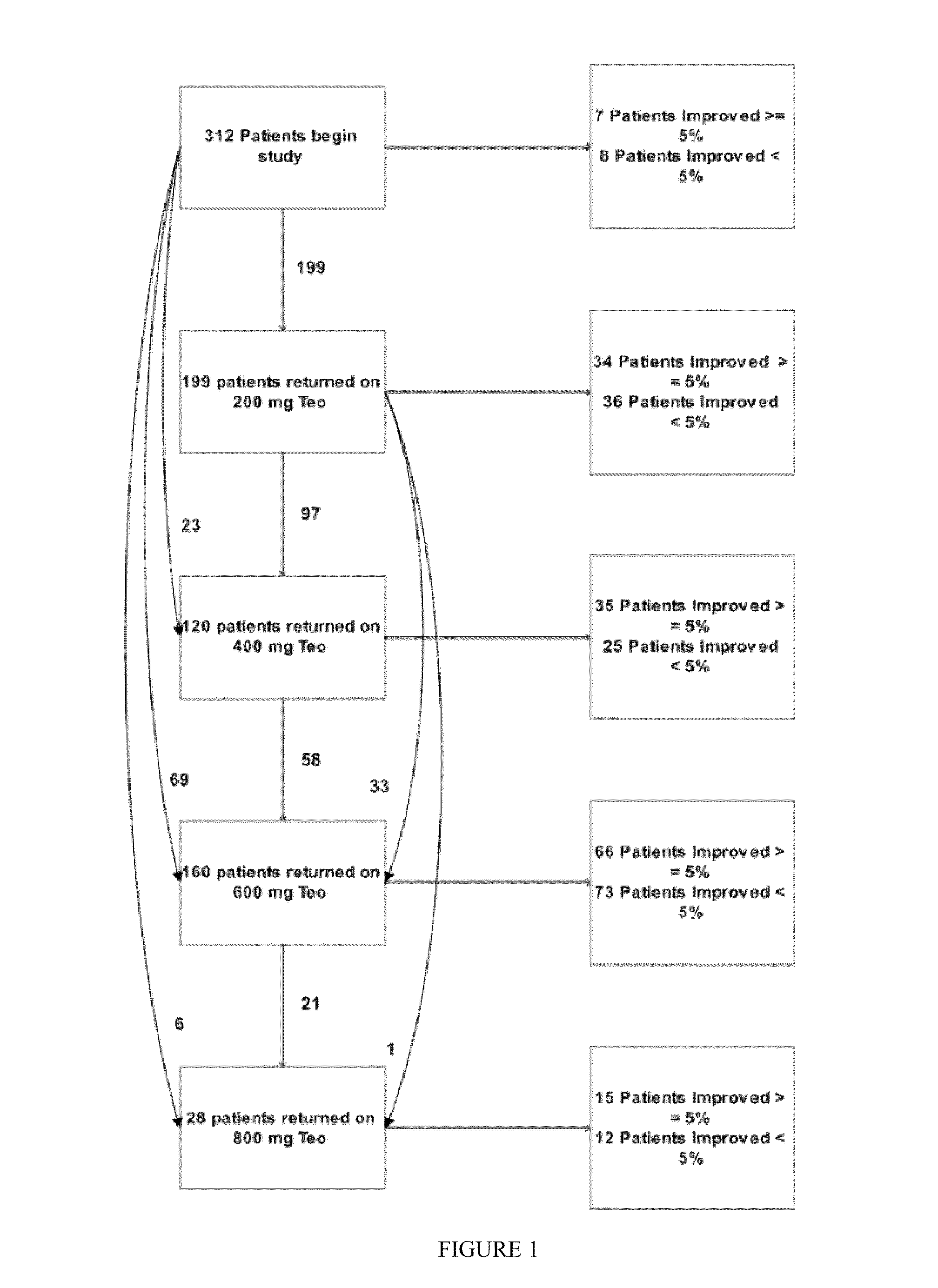Phosphodiesterase inhibitor treatment
a phosphodiesterase inhibitor and treatment technology, applied in the direction of biocide, heterocyclic compound active ingredients, drug compositions, etc., can solve the problems that systemic administration may not achieve therapeutically effective concentrations, and achieve the effects of increasing the nasal mucus or saliva camp or cgmp level, and increasing taste or smell acuity
- Summary
- Abstract
- Description
- Claims
- Application Information
AI Technical Summary
Benefits of technology
Problems solved by technology
Method used
Image
Examples
example 1
[0070]Patients with smell loss (hyposmia) reflect a clinically diverse group of patients (1-10). Whereas there is common agreement that many patients exhibit this clinical problem, there is no agreement with respect to their treatment. Indeed, most groups who evaluate these patients consider that there are few, if any, medically relevant treatments for them.
[0071]In an attempt to elucidate the biochemical pathology of hyposmia, total protein fractionation was performed on saliva (14, 15) and nasal mucus (16), since these fluids bathe both taste buds and olfactory epithelial tissues, respectively, and contain substances which are critical to maintain these sense organs (14-16). It was discovered that some patients with smell loss had diminished salivary (17) and nasal mucus (18) levels of the saliva and nasal mucus protein carbonic anhydrase (CA) VI, a putative stem cell growth factor; treatment of these patients with exogenous zinc increases both salivary and nasal mucus CA VI (19) ...
example 2
[0187]Theophylline treatment restored smell function in over 50% of the hyposmic patients in Example 1. This study, however, was an open label clinical trial and not all patients responded to the drug. These results raise questions about the character of the study and the efficacy of the drug to correct the smell loss.
[0188]In an effort to understand more about these results, levels of cAMP and cGMP in saliva before and after theophylline treatment were studied in patients who participated in the clinical study of Example 1. Cyclic nucleotide levels were not assayed until the entire analysis of the clinical trial results was completed.
[0189]Methods
[0190]Thirty-one patients, aged 29-85 y (56±3 y, Mean±SEM) from among the 312 patients who participated in the open label, fixed design clinical trial treated with theophylline of Example 1 were studied. There were 13 men, aged 54±3 y and 18 women, aged 58±4 y. All patients exhibited hyposmia. Six had Type I hyposmia, 25 had Type II hyposm...
example 3
[0212]Hyposmic patients for whom the etiology of smell loss is not associated with head injury or allergic rhinitis are enrolled in an open label trial of inhalable theophylline. Patients are started at an initial dose of not more than 500 μg formulated as a liquid spray or dry powder to be delivered as a metered dose. Initially only local patients are enrolled so that quicker dose titration is achieved. Groups of 5 patients are started on not more than 500 μg of theophylline and continued for 1 month.
[0213]Patients are tested for improvement in smell acuity using the standard forced choice technique using four odors as described in Example 1. Additionally, subjective measurements of smell function are obtained using a scale from 0-100 as described in Example 1. Blood samples are also drawn to ascertain blood theophylline level to gauge its relationship to the expected recovery of smell.
[0214]Nasal administration of theophylline provides for high, initial concentrations of theophyll...
PUM
| Property | Measurement | Unit |
|---|---|---|
| concentration | aaaaa | aaaaa |
| concentration | aaaaa | aaaaa |
| concentration | aaaaa | aaaaa |
Abstract
Description
Claims
Application Information
 Login to View More
Login to View More - R&D
- Intellectual Property
- Life Sciences
- Materials
- Tech Scout
- Unparalleled Data Quality
- Higher Quality Content
- 60% Fewer Hallucinations
Browse by: Latest US Patents, China's latest patents, Technical Efficacy Thesaurus, Application Domain, Technology Topic, Popular Technical Reports.
© 2025 PatSnap. All rights reserved.Legal|Privacy policy|Modern Slavery Act Transparency Statement|Sitemap|About US| Contact US: help@patsnap.com



